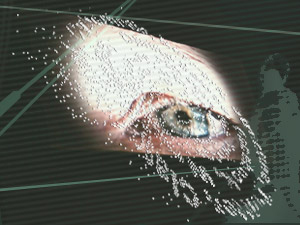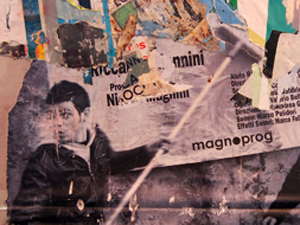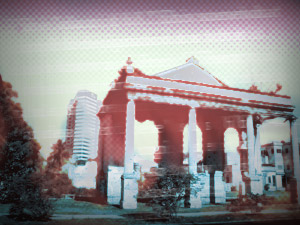A liberatory UC, run by and for all the people, is not only possible—it is a critical part of a planetary youth movement that is enacting true democracy in public squares and parks. We have faith that the weapons at our disposal will allow us to play our part. We have faith that these weapons will allow us to peacefully tear down the old edifice and build this new university from the ground up. Our pedagogy is our main weapon, and on a daily basis, we see that it is neither blunt nor ineffective. These are our main pedagogical principles—intuitions more than ideologies, bonds more than guidelines, dreams rather than demands. These principles aim at cracking through the crumbling structure of the university at its base. Through these principles, we will take part in a guerrilla campaign to bring all of the people back into the university.
Issues
smartAction
Images from an art exhibition inspired by the 2010–2011 University of Puerto Rico student Movement.
La Performatividad Colectiva como Arte Publico: Acción dentro de la Huelga de la Universidad de Puerto Rico / Collective Performance as Public Art: Action inside the University of Puerto Rico’s Strike
In April 2010, the University of Puerto Rico experienced a moment of political convulsion due to a series of measures and budget cuts that the administration tried to implement. These events moved the students to demand a reason for these budget cuts. After not getting any clear or valid answers from the administration, the student body organized a series of protests that lead to an almost two-month long strike. My paper is mainly focused on the artistic manifestations that resulted from the strike. These, from our perspective, can easily ft into what is considered public art, may them be intended as such or not, because they transform the street into a place of dialogue and relationships.
Editors’ Introduction
In this inaugural issue, Lateral takes the form of a cluster of four research threads. The initial threads converge around a consideration of knowledge formations, institutional and material location, and political intervention and implication. The initial four threads are meant as an exploration of what is possible and an invitation for further work. Theory and Method, curated by Patricia Clough, treats various forms of knowing and being in cultural studies research. Creative Industries, curated by Jaafar Aksikas, invites composite methodological approaches to intersectoral flows inside and outside the university. Universities in Question, curated by Bruce Burgett and Randy Martin, decenters established claims for disciplinary, labor, and political economic legitimations for higher education. Mobilisations, Interventions, and Cultural Policy curated by Emma Dowling, pursues current transformational activisms to rethink values of polity, policy, and participation.
Culture Industries: Critical Interventions
This thread presents a different agenda for studying culture and the culture industries in particular, one that is grounded in a distinctly cultural studies materialist reflexivity. Cultural studies is probably best understood as the politically committed, theoretically grounded, and radically self-reflexive and historical-materialist analysis of cultural processes and practices, where the commitment to imagine a humane, socialist society has always been a guiding assumption in the field from its early formations in post-war Britain.
“Nothing gold can stay:” Labor, Political Economy, and the Birmingham Legacy of the Culture Industries Debate
Over the course of the last 150 years or so, we can see three distinct phases of the culture industry. More specifically, there have been (at least) three eras marked by different configurations of the relationship between culture, politics, the dominant mode of production and the commodification of culture. Cultural Studies emerged from the second era, whose contours I’ll explore here; and we are now in a liminal phase brought on by the uncertain conflagration between the neoliberalism, convergence culture, and nascent popular uprisings under the banner (and hashtag) #occupyeverywhere. This third phase, or conjuncture, once again reconfigures these relations, making it important to revise the theoretical assumptions and political strategies that were adhered to in an earlier era of “the culture industry.” I will outline the direction I think this points to both in our understanding of the culture industries and in terms of political and theoretical strategy going forward.
Distributed Centralization: Web 2.0 as a Portal into Users’ Lives
Web 2.0 as a whole is beginning to take a decidedly interconnected shape. Facebook, Google, YouTube, Wikipedia, Blogger, Twitter and other Web 2.0 sites are linked to one another in a complex and bewildering array of Application Programming Interfaces (APIs), user-created applications, links, protocols, and browser extensions. To trace these connections, this paper draws on the intersection between computing, software engineering, and the management of labor in informational capitalism to uncover an architectural model with which to understand this complexity: the portal model. We will see how the interconnections between Web 2.0 sites, built on de facto protocols, is creating the Web as Portal, an architecture built to capture value produced by users, value that was previously hidden as unstructured data. Web 2.0 as a portal is rife with contradictions: on the one hand, the Web (and Internet) remain distributed networks, and Web 2.0 applications could easily be mapped as distributed. On the other hand, extremely popular sites such as Facebook (for social networking) and Google (for search), as well as the increasing interconnection between them, are rendering Web 2.0 to be a centralized network. This distributed centralization is part of the larger portal architecture, wherein heterogeneous sites are articulated into a network of networks.
Introduction: Mobilisations, Interventions, and Cultural Policy
There are four themes that weave their way through the research thread on Mobilisations, Interventions, and Cultural Policy in this issue. First, there is concern with intervention—intervention into the politics and practices of social movements and intervention into the academy and its traditions of knowledge production. Second, each text is situated firmly within a recognition and appreciation of social movements as knowledge producers. Third, all three contributions are unequivocally located in an urban context and the contemporary condition of inhabiting the city. Finally, what emerges from each reflection is a commitment to militant research and practice, as one that keeps ever-present an awareness of the relationship of research to existing material social relations of power and a commitment to confronting and transforming these very relations.
Urban Interventions / Intervenzione Urbane
Urban Interventions is a series of collages by Alexander Dellantonio that take the urban terrain with its rapid changes as the matrix of inquiry, presenting the artists reflections on the city. The strong colours used by the artist echo the city’s images, places, people and situations and tattered billboard posters and manifestos torn off the buildings the militants fly-posted them on are reassembled to show the city and its inhabitants in movement. Dellantonio appropriates parts of the city and seeks to return them to the spectator. In so doing, these works not only engage the urban terrain as a space of politics, they also raise questions about mediation in the context of the current crisis of political representation that is being expressed by movements across the world, whether for example in Tahrir or Syntagma Square, at Occupy Wall Street or during the public sector strikes in the UK.
Commentary on “Urban Interventions / Intervenzione Urbane”
Gavin Grindon responds to ‘Urban Interventions / Intervenzione Urbane’ by Alexander Dellantonio.
Commentary on “Urban Interventions / Intervenzione Urbane”
Begüm Özden Firat responds to ‘Urban Interventions / Intervenzione Urbane’ by Alexander Dellantonio.
Postcool
Francesco Salvini asks what it means to translate the categories of postcolonial thought in the practices of organisation of a subaltern neighbourhood trapped in the hurricane of valorisation and abstraction of urban space. Salvini presents an analysis of what he calls an ‘audio-visual inquiry’ conducted by a collective of political activists organising in the Raval in Barcelona. The laboratory of Postcool sought to find ways to learn about the subaltern histories of the Raval that are made invisible. Salvini discusses the ways in which the collective investigated how these subaltern histories of the Raval inscribe themselves in the urban design of the city in their relevance for organising against gentrification in the context of postcolonial capitalism.
Response to “Postcool”
Sandro Mezzadra responds to “Postcool” by Francesco Salvini, reflecting on the “method” of militant research the use of Chakrabarty’s concepts in Salvini’s understanding of “postcolonial capitalism.”
Nanopolitics: A First Outline of Our Experiments in Movement
The London-based nanopolitics group formed around a desire to think politics with and through the body, organising movement, theatre, and somatic based workshops and discussions. Using the term ‘nanopolitics’ to describe a political engagement that is attentive to the body, the nanopolitics group engage in a first reflection about their project in the text that appears here. They pose a series of questions that emerged from the project and engage in a collective reflection on their work with the body and movement, making a first foray into theorising their practice and its relevance.
Introduction: Theory and Method
The Theory and Method Thread of Lateral launches its first publication with two essays, one by John Mowitt of Cultural Studies and Comparative Literature at University of Minnesota and one by Jared Sexton, Director of African American Studies, School of Humanities at University of California Irvine. Together their essays along with responses by Christina Sharpe of American Studies at Tufts University, Adam Sitze of Black Studies and Law, Jurisprudence and Social Thought at Amherst College and Morgan Adamson of Cultural Studies and Comparative Literature at University of Minnesota, all take theory to one of the most pressing, worldly and yet intimate, of issues faced by each of us, whether working in and/or outside the academy: that is, the conditions of study, or studies, in the University.


